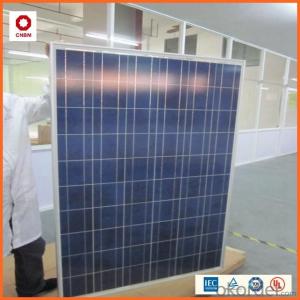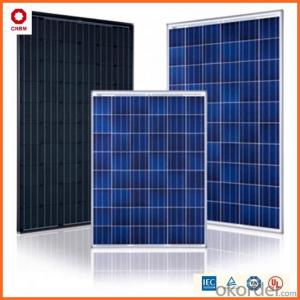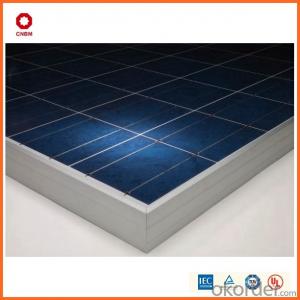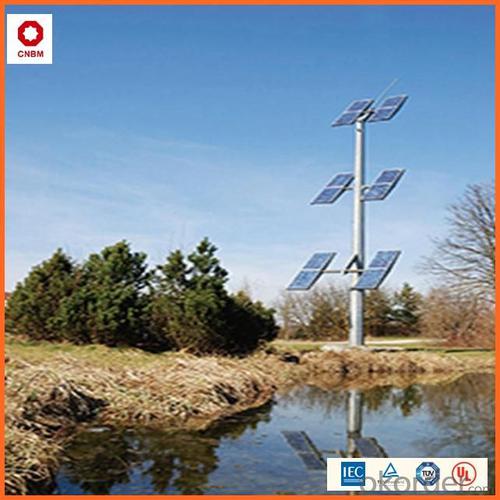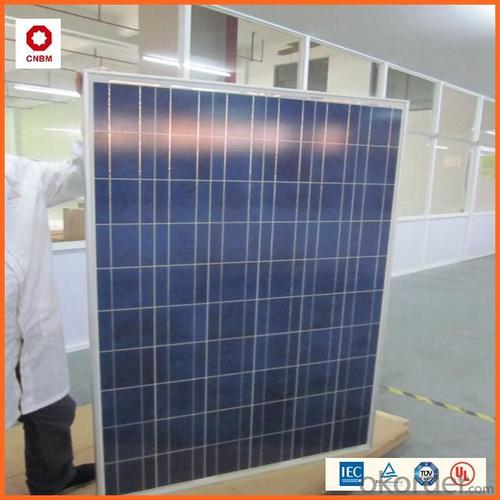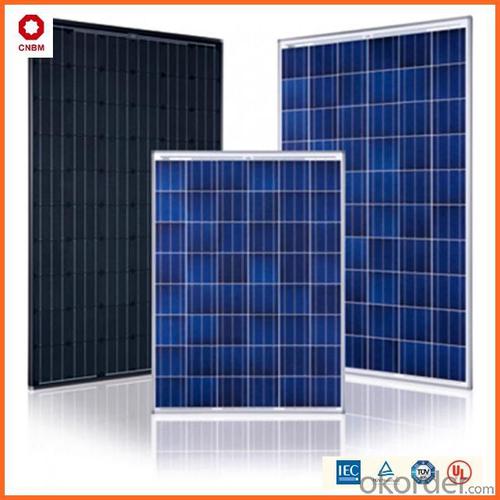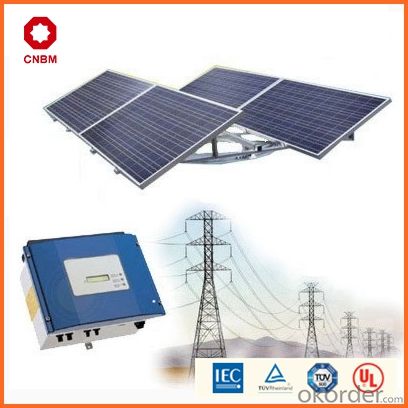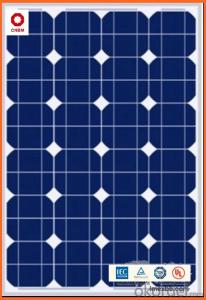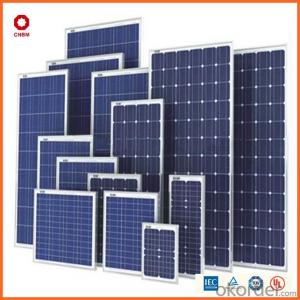Solar Energy Systems Brevard - 40w Small Solar Panels with Good Quality
- Loading Port:
- China main port
- Payment Terms:
- TT OR LC
- Min Order Qty:
- 1 watt
- Supply Capability:
- 10000000 watt/month
OKorder Service Pledge
OKorder Financial Service
You Might Also Like
Specification
Hot Sale !!! Quality and Safety of Small Poly Solar Panel 25~85w
1. Rigorous quality control meets the highest international standards.
2. High-transmissivity low-iron tempered glass, strong aluminium frame.
3. Using UV-resistant silicon.
4. IS09001/14001/CE/TUV/UL
Warranties of Small Poly Solar Panel 25~85w
1. 10 years limited product warranty
2. 15 years at 90% of the minimal rated power output
3. 25 years at 80% of the minimal rated power output
Specification
Characteristics of Poly solar panels CNBM (25-85W) | |||||
Max Power Voltage Vmp(V) | 30.3 | 30.8 | 31.1 | 31.4 | 31.85 |
Max Power Current Imp(A) | 7.60 | 7.64 | 7.73 | 7.81 | 7.85 |
Open Circuit Voltage Voc(V) | 36.1 | 36.6 | 37 | 37.3 | 37.68 |
Short Circuit Current Isc(A) | 8.50 | 8.55 | 8.65 | 8.75 | 8.85 |
Max Power Pm(W) | 230W | 235W | 240W | 245W | 250W |
Temperature Coefficient of Cells Poly solar panels CNBM (25-85W) | |
NOCT | 45± 2 |
Temperature Coeffucients of Isc | 0.0492 |
Temperature Coeffucients of Voc | -0.3374 |
Temperature Coeffucients of Voc | -0.4677 |
Mechanical Data of Poly solar panels CNBM (25-85W) | |
Dimension | 1638 × 982 × 40 mm |
Weight | 19.5 kg |
No. of Cells and Connections | 60 (6 ×10) |
Tolerance | 0 ~ + 5 W |
Cell | Monocrystalline Cell 156 × 156 mm |
Packing | 624 Pcs/40ft(H) Container |
Limits of Poly solar panels CNBM (25-85W) | |
Operating Temperature | -40 to +85 |
Storage Temperature | -40 to +85 |
Max System Voltage | 1000VDC(IEC) / 600VDC(UL) |
Features of our products:
• High conversion efficiency mono/poly-crystalline amorphous silicon solar cells
• Modules incorporate high performance bypass diodes to minimize the power drop caused by shading
• High transmittance, low-iron tempered glass
• High performance EVA encapsulant to prevent destroying and water.
• AI frame: without screw, corner connection. 8 holes on the frame can be installed easily
• Good performance of preventing from atrocious weather such as wind and hails
• Certifications: CE IEC TUV VDE UL, Class I
• 10 years 90% power output warranty

Shipping of Small Poly Solar Panel 25~85w
By Sea | Delivery from Shanghai or Ningbo seaport |
By Air | Departure from Shanghai Pudong Airport |
By Express | Post by DHL, EMS, UPS, TNT. |
- Q: How do solar energy systems integrate with other renewable energy sources?
- Solar energy systems can integrate with other renewable energy sources through a concept known as hybrid renewable energy systems. These systems combine the generation of solar power with other sources like wind, hydro, or biomass to create a more reliable and efficient energy solution. By diversifying the energy sources, a hybrid system can ensure continuous power supply even when there is insufficient sunlight. Additionally, the integration of multiple renewable sources allows for better utilization of resources and enhances the overall sustainability of the energy system.
- Q: How do solar energy systems impact national energy policy?
- Solar energy systems have a significant impact on national energy policy as they promote the diversification of the energy mix, reduce dependence on fossil fuels, and contribute to the overall goal of achieving clean and sustainable energy sources. Governments often incentivize the adoption of solar technologies through various policies, such as tax credits and feed-in tariffs, to accelerate their deployment and achieve renewable energy targets. Additionally, the integration of solar energy systems into the national grid can enhance energy security, create jobs, and stimulate economic growth in the renewable energy sector. Overall, solar energy systems play a crucial role in shaping national energy policies towards a greener and more sustainable future.
- Q: Do solar energy systems require a backup generator?
- A backup generator is not always needed for solar energy systems. The primary source of power for these systems is sunlight, meaning they can generate electricity as long as there is enough sunlight. It's important to consider that solar energy systems are usually connected to the electrical grid, allowing any surplus power to be sent back to the grid when the solar panels produce more electricity than is being used. This can result in a credit or compensation from the utility company, which can help offset the cost of electricity when the solar panels are not generating enough power. However, if a solar energy system is not connected to the electrical grid and operates independently, a backup generator or an energy storage system like batteries may be necessary to ensure a continuous power supply during periods with insufficient sunlight. Ultimately, the need for a backup generator depends on the specific setup and requirements of the solar energy system.
- Q: How do solar energy systems impact the reduction of fossil fuel consumption?
- The reduction of fossil fuel consumption is greatly influenced by solar energy systems. One of the key benefits of solar energy is its utilization of the sun's power, which is a renewable energy source. This implies that solar energy systems do not rely on the burning of fossil fuels like coal or natural gas to generate electricity. By adopting solar energy, we can decrease our dependence on fossil fuels for electricity generation, thereby reducing our carbon footprint and addressing the negative environmental consequences associated with fossil fuel consumption. Additionally, solar energy systems contribute to the reduction of fossil fuel consumption through net metering. Net metering allows individuals or businesses with solar panels to sell any excess electricity generated back to the grid. This means that when solar energy production is high and exceeds the amount being used, the surplus energy is fed into the grid. Consequently, the need for fossil fuel-based power plants to produce electricity to meet demand decreases, resulting in an overall reduction in fossil fuel consumption. Moreover, the adoption of solar energy systems can lead to a decrease in the demand for fossil fuel-based electricity, which can subsequently drive down electricity prices. This price reduction enhances the economic competitiveness of renewable energy, encouraging greater adoption of solar energy systems and further decreasing the demand for fossil fuels. In conclusion, solar energy systems play a crucial role in reducing fossil fuel consumption. By harnessing the sun's energy, solar power systems eliminate the necessity of burning fossil fuels for electricity generation. Through net metering and the potential for price reductions, solar energy systems contribute to the overall reduction of fossil fuel consumption, promoting a cleaner and more sustainable energy future.
- Q: Can solar energy systems be used in areas with high levels of dust or sandstorms?
- Yes, solar energy systems can be used in areas with high levels of dust or sandstorms. However, regular cleaning and maintenance of the solar panels may be required to ensure optimal performance. Additionally, selecting appropriate mounting systems and using dust-resistant materials can help mitigate the impact of dust or sandstorms on solar energy systems.
- Q: Can a solar energy system be connected to the grid?
- Yes, a solar energy system can be connected to the grid. In fact, most solar installations are designed to be grid-connected, allowing excess electricity to be fed back into the grid and reducing reliance on non-renewable energy sources. This connection also enables homeowners and businesses to benefit from net metering programs, where they receive credits or payments for the surplus electricity they generate.
- Q: What are the different types of solar panels used in solar energy systems?
- The different types of solar panels used in solar energy systems include monocrystalline, polycrystalline, and thin-film panels. Monocrystalline panels are made from a single crystal structure, which makes them highly efficient but also more expensive. Polycrystalline panels are made from multiple crystals, making them slightly less efficient but more cost-effective. Thin-film panels are made by depositing a thin layer of photovoltaic material onto a substrate, making them flexible and lightweight, but generally less efficient than crystalline panels.
- Q: What are the main components of a solar energy system?
- The main components of a solar energy system include solar panels, an inverter, a charge controller, batteries (if it's an off-grid system), and a power meter (if it's an on-grid system).
- Q: Can solar energy systems be integrated into building materials, such as solar roof tiles?
- Yes, solar energy systems can be integrated into building materials, and one popular example is solar roof tiles. Solar roof tiles, also known as solar shingles or solar slates, are designed to resemble traditional roofing materials while harnessing solar energy. These specially designed tiles are made of photovoltaic cells that convert sunlight into electricity. Solar roof tiles have several advantages over traditional solar panels. Firstly, they blend seamlessly with the overall appearance of the building, making them more aesthetically pleasing. This integration into the building's structure allows for a more cohesive design, especially in areas where strict architectural guidelines are in place. Additionally, solar roof tiles can be installed on both new and existing buildings, providing a flexible and adaptable solution. Another advantage of solar roof tiles is their ability to generate electricity while being durable and weather-resistant. These tiles are made to withstand various weather conditions, including rain, snow, and wind. Furthermore, solar roof tiles are typically made from high-quality materials, ensuring a longer lifespan compared to traditional roofing materials. The integration of solar energy systems into building materials like solar roof tiles offers numerous benefits. They not only generate clean and renewable energy but also contribute to reducing the reliance on fossil fuels and decreasing carbon emissions. Additionally, solar roof tiles can help reduce energy costs by generating electricity on-site, allowing homeowners and businesses to become more energy-independent. Overall, solar energy systems can indeed be integrated into building materials, and solar roof tiles are a prime example of this. With their aesthetic appeal, durability, and energy-generating capabilities, solar roof tiles are a promising solution for harnessing solar energy while maintaining the architectural integrity of a building.
- Q: Can solar energy systems be used in areas with limited access to the electrical grid?
- Areas with limited access to the electrical grid can certainly utilize solar energy systems. In fact, solar power is an ideal option for such areas due to its decentralized nature and sustainability. Photovoltaic panels, for example, capture solar energy and convert it into usable electricity. These systems can be installed in remote locations without extensive electrical infrastructure. By utilizing solar energy systems, areas with limited grid access can become self-sufficient in meeting their energy needs. These systems can power essential appliances like lighting, communication devices, and small-scale machinery, providing reliable energy even in areas where traditional grid connections are unavailable or unreliable. Furthermore, solar energy systems bring numerous benefits to areas with limited grid access. They provide an environmentally friendly alternative to fossil fuel-dependent energy sources, reducing carbon emissions and combating climate change. Solar power systems also offer a consistent and reliable energy source, reducing reliance on expensive and polluting forms of energy like diesel generators. Additionally, solar energy can drive economic growth and development in remote areas. By powering essential infrastructure such as schools, hospitals, and businesses, solar systems improve education, healthcare, and economic opportunities. Moreover, the installation and maintenance of solar energy systems create local jobs and foster entrepreneurship. To successfully implement solar energy systems in areas with limited grid access, it is crucial to address challenges like initial costs, technical expertise, and maintenance. However, advancements in technology and decreasing costs have made solar power increasingly accessible and affordable. Various organizations, governments, and non-profit entities actively work to promote solar energy adoption in such areas and provide necessary assistance. In conclusion, solar energy systems are a viable and sustainable solution for areas with limited access to the electrical grid. They offer a decentralized, reliable, and environmentally friendly source of electricity, bringing numerous benefits to these regions. By harnessing the power of the sun, these systems empower communities, promote economic development, and improve the quality of life for those living in remote areas.
Send your message to us
Solar Energy Systems Brevard - 40w Small Solar Panels with Good Quality
- Loading Port:
- China main port
- Payment Terms:
- TT OR LC
- Min Order Qty:
- 1 watt
- Supply Capability:
- 10000000 watt/month
OKorder Service Pledge
OKorder Financial Service
Similar products
Hot products
Hot Searches
Related keywords

